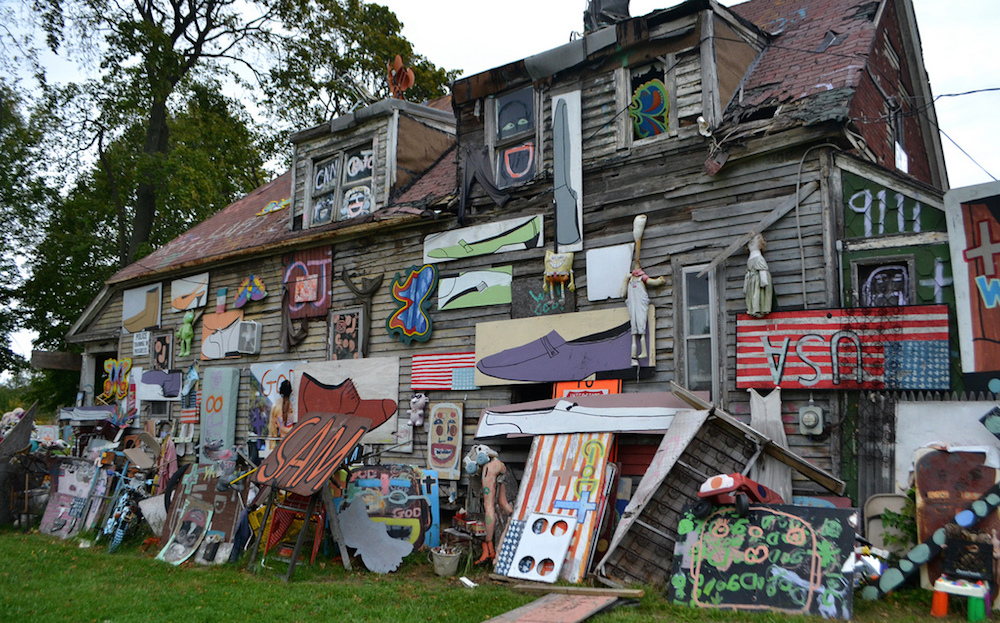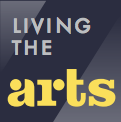
In 2012, San Bernardino, California, filed for bankruptcy with more than $1 billion in debt. The city, about 60 miles east of L.A., is still climbing out from the devastation of the Great Recession. At 20 percent, San Bernardino County’s poverty rate is among the highest in the state. Yet the arts scene is flourishing. A poet and photographer recently joined forces for a public art project to explore residents’ experiences of their city. A new cultural center has asked students to submit art on what they love about San Bernardino. What difference, if any, do these sorts of community arts-based efforts play in helping to revitalize a city? Do the arts actually attract people and investment? In advance of the Zócalo/James Irvine Foundation event in San Bernardino, “Can the Arts Help Revive Our City?”, we asked experts from across the U.S.: How can the arts help an economically distressed city to recover?
Our City?”, we asked experts from across the U.S.: How can the arts help an economically distressed city to recover?

Today, boosters can point to proven ways the arts spark vitality and investment in struggling communities. Arts centers emerge in renovated buildings, while shoestring community theater and coffee shops occupy battered storefronts. Creativity sells. A hard-won farmers’ market—systematically expanded one stall at a time—proves to a supermarket that the town is a viable location. Entrepreneurial artists take risks and offer fresh ideas. Investors follow.
Cautionary tales of frail recovery or gentrification of course persist. Why do these inspiring models sometimes seem formulaic? They represent stories about the economy—familiar stories. But these narratives have power as scripts shaping economic decision-making; they frame our thinking as a society but they do not dictate.
Fostering the arts can re-write a community’s economic story. Distressed cities are burdened with a narrative of decline. The generative nature of the arts—writing, performing, drawing, imagining, dancing, moving, experimenting, filming—creates fresh ways of conceiving the past, the present, and, most importantly, the future. New performances can help people move beyond crisis. Philadelphia’s Funeral for a Home program, supported by Temple University’s Tyler School of Art, publicly commemorates “the slow decline and gradual rebirth” of the city’s housing. Elsewhere, a city is remapped by a documentary film investigating a historical event that has silently overshadowed a community for years, or a new walking-tour script with startling perspectives. The arts have become more participatory, representing immigrant and migrant communities, inviting young and old, and involving the traditional and the wild. In cultivating new stories, the arts can liberate an economically challenged community from its prevalent narrative. Each city confronts a different history—the departure of a factory, rising crime, demographic transition, perhaps an uprising in the 1960s or 2010s. The arts equip individuals to face old and new obstacles, shape their lives, and see fresh possibilities.
Alison Isenberg is a professor of history at Princeton University and co-director of the Princeton-Mellon Initiative in Architecture, Urbanism, and the Humanities. She is the author of Downtown America: A History of the Place and the People Who Made It, and has just completed a book, Dollars and Design, on arts and urban renewal in the San Francisco Bay Area in the 1950s to 1970s.

In 2016, the Heidelberg Project, an outdoor community art environment in Detroit, will celebrate 30 years. The nonprofit has existed through six mayoral administrations and survived bulldozers sent in by the city of Detroit (in 1991 and again in 1999); it has also endured 12 fires (unsolved acts of arson). In spite of challenges, it has survived and continues to thrive through the sheer will of its founder, Tyree Guyton, who says that art saved his life.
The mission of the Heidelberg Project is to change lives and communities through art. We believe that all people have a right to grow and flourish in their community using art and creativity as the essential building blocks. The art environment, created out of repurposed materials and found objects mostly salvaged from the streets of Detroit, has sparked new conversations about an otherwise forgotten neighborhood. “You can’t heal the land until you heal the minds of the community,” says Tyree. Through his own transformation, Tyree believed that art could also save his community.
Transforming the mind through art became the motivating factor for many of the Project’s programs and activities. For example, we designed a program for K-12 students—Art, Community, and Environmental Education—that helped children appreciate the community in which they lived and to respect the environment in which it was built.
People have visited us from 140 countries, and we have become Detroit’s third most-visited tourist destination with over 200,000 visitors. However, the greatest testament to the success of the Heidelberg Project is the lives it has changed. Justin, who grew up on Heidelberg Street, was just 2 years old when Tyree first put a paintbrush in his hand. His family life was extremely challenged, but he thrived through his involvement in the arts. Today, Justin is 22 and a senior studying criminal justice at Central Michigan University.
Jenenne Whitfield has served as the executive director of the Heidelberg Project for 23 years and has helped the project to extend its reach by participating in joint projects with museums, universities, and other educational organizations throughout the world.

While the arts alone are not going to create good schools, safe streets, and affordable housing, among other crucial measures of a healthy community, I would argue that urban revitalization strategies that lack a sophisticated, flexible arts and culture element are woefully incomplete.
At a moment when many people making housing choices are rejecting cookie-cutter homogenous communities and hungering for places with real character, soul, and opportunities to form social bonds, it is imperative when thinking about revitalization to consider a broad range of arts-related amenities.
Cultural centers, performing art centers, and museums are important hubs and assets, but our thinking about arts and culture can’t stop there. A culturally vibrant community that both deepens residents’ connection to the place and attracts new residents and investments relies on creative small businesses and nonprofits to advance the work of artists, artisans, and culture bearers—people who maintain cultural traditions and practices. It relies on access to affordable neighborhood spaces to provide formal and informal artistic and creative experiences for residents, as well as opportunities for them to help shape their environment in physical, social, and aesthetic ways. And it relies on consciously advancing the preservation of cultural assets, while at the same time promoting innovation.
Without considerations for such elements, we run the risk of squandering opportunities to not only advance revitalization in economic terms, but to create more interesting, meaningful places that stimulate a more engaged and equitable society. Aren’t those also critical aspects of revitalization?
Maria Rosario Jackson is senior advisor to the Kresge Foundation and a presidential appointee to the National Council on the Arts. She has been an adjunct faculty member at Claremont Graduate University and the University of Southern California.

The social and economic downturn of 2008 hit Modesto, California, hard and resulted in empty storefronts, unkempt structures thirsting for a coat of paint, unfunded (or underfunded) social welfare programs, and fewer municipal services. For years, the city’s unemployment rate has been high (it’s currently 7.6 percent), which has meant fewer people shopping or dining downtown, more small businesses closing, an increase in vagrancy, and higher numbers of folks living on the streets—especially folks struggling with mental health challenges.
The nonprofit Peer Recovery Art Project was created in 2007 to revitalize downtown areas and implement a new strategy for creating a more inclusive and healthy community. We believe that art can help to restore our economically distressed city, and brought together some of Modesto’s most disenfranchised (and often stigmatized) residents to do the work. The organization started by hosting a few art exhibitions and music shows downtown. Today, Peer Recovery Art Project has headquarters in a 6,000-square-foot community arts center and runs multiple arts outreach programs for people with mental health challenges.
Our arts center was once a deteriorated building, but now features neon signs, fresh paint, and a mural based on George Lucas’ 1973 film American Graffiti, which was filmed in Modesto. We formed Classic Community Murals with Wells Fargo Bank and ModestoView to create 15 murals so far—11 of which have the American Graffiti theme. Another effort, Murals in Motown, creates artistic renderings of hometown heroes and Central Valley life. We’ve even had folks come to Modesto looking to take a tour of the mural route.
Every community member is responsible for helping make the community healthy. By acting as if we are the ones that can make the change happen, we can make it happen.
John Black is the CEO of Peer Recovery Art Project Incorporated in Modesto, California.



